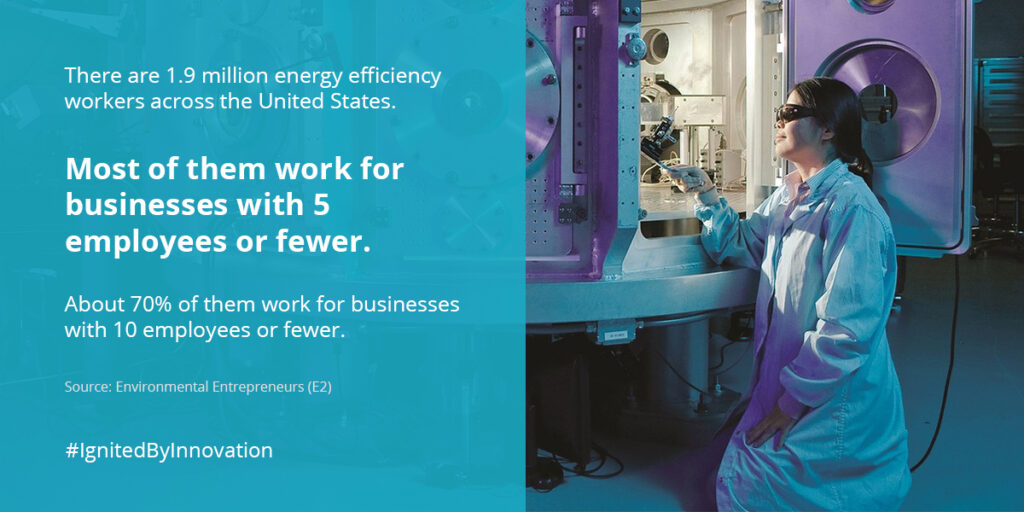This week is National Small Business Week, and CRES is highlighting the efforts that small businesses around the country have contributed to advancing clean energy technology. Small businesses are the backbone of America’s economy and are leading the way in energy innovation. For example, the majority of America’s 1.9 million energy efficiency workers work for small businesses with five employees or fewer, and about 70 percent work for companies with 10 or fewer.
Perhaps those numbers surprise you. After all, the most noticeable clean energy installations that you see from the road while you are driving are probably major utility-scale operations like large solar farms or massive wind turbines worth many millions of dollars. Those sorts of projects are certainly economic juggernauts that support many jobs.
But developing them also stimulates job creation for other industries—which tend to be inherently local and based in manufacturing and contracting. Those solar farms and wind turbines are massive undertakings requiring extensive steel infrastructure, landscaping, civil engineering, and substantial manpower to lay transmission lines. Indeed, most jobs require local expertise in system design, project development, installation, operation, and management.
Many of those products and services are provided by small businesses. They are often the scrappy, All-American, self-starting, entrepreneurial, mom-and-pop shops we all admire. They might be founded by a few researchers in a university laboratory, an individual working in a business incubator, or even a couple of best friends working out of a garage. These people take on a lot of risk and devote endless hours and untold blood, sweat, and tears to make their dreams come true and make a difference in our energy security.
The sacrifices they make may not even be enough in some cases, and that’s why they often need strong public-private collaborations to help them bring the next big idea in energy innovation to reality. Programs like the Department of Energy’s Advanced Research Projects Agency – Energy (ARPA-E) help bridge the gap between scientists in the lab and entrepreneurs in the marketplace; in 2017, ARPA-E resulted in the creation of 56 new energy innovation companies. Further, programs like Small Business Innovation Research (SBIR) and Small Business Technology Transfer (STTR) through the Office of Energy Efficiency and Renewable Energy are key lifelines for small businesses.
Partnerships with energy innovation small businesses are quintessential examples of government that works. For example, after decades of research and partnership with the private sector, the solar industry has gone from being used in the space industry, to employing 370,000 people and providing up to 13 percent of electricity generation for some states. Nearly four-fifths of solar firms have fewer than 50 employees, with a third having five or fewer.
CRES supports America’s small businesses working in energy innovation, and we love the fact that it creates jobs, helps strengthen the economy, and decreases our reliance on outside energy sources. That’s why we are going to be starting a new series of blog posts and short videos highlighting the small businesses making an impact in energy innovation, beginning later this week with a profile of Henniker Brewing in New Hampshire and Onboard Dynamics in Oregon. We know you will be impressed by these entrepreneurs!

